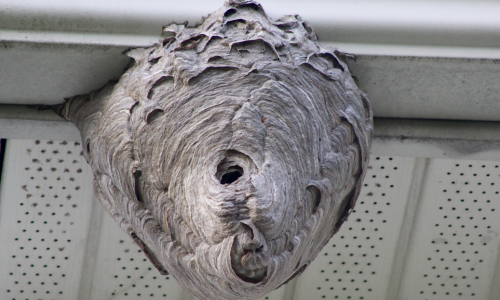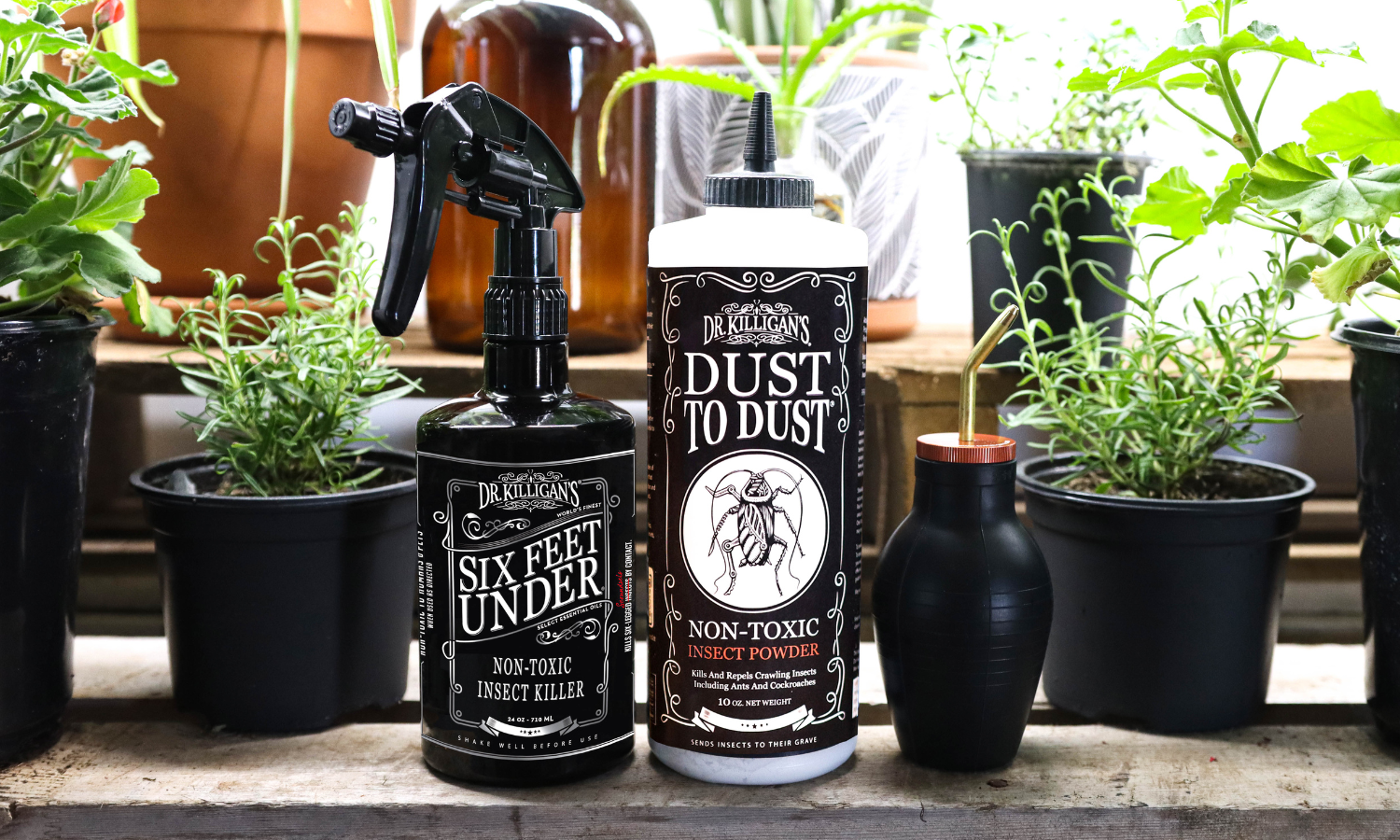While wasps can assist in pollination, they can also be a nuisance and a threat. No one appreciates these insects making a surprise visit to a summer pool party, picnic, or barbecue, and they especially do not appreciate being stung. If you have been stung by a wasp, read our blog on home remedies for wasp stings, and if you are unsure whether those flying insects you see are wasps or bees, read our blog on how to identify different wasps. If you have a wasp problem, here are some things you can do to keep wasps away from your home and to get rid of wasps that have already moved in.
Note: If you are allergic to wasp stings, or suspect that you may be, we strongly advise that you seek professional help in dealing with wasps. Wasp stings can set off anaphylactic shock in people that are allergic.
How to keep wasps away from your home
Use decoy nests

Because wasps tend to be territorial, they will typically not set up camp within two hundred feet of another nest. You can find decoy nests at a store that specializes in home improvement or gardening. Follow the instructions that come with the decoy nests, and if you have a large house or garden, be sure to put up a couple of them on different sides of your yard.
Store food carefully
Wasps are very attracted to protein and sugar. They tend to go after meat, dog food and other things that their carnivorous larvae will eat during the beginning of the summer. Towards the end of the summer they go for sweeter things such as fizzy drinks, fruit and sugary foods, because the sugary substance secreted by their larvae that the adult wasps eat, diminishes.
What else can I do?
To minimize the issue of wasps finding food sources near your house, be sure to:
- Keep trash cans sealed.
- Keep animal food sealed in a plastic bin if it is kept outside your house or in your garage.
- Keep food, such as picnic or barbecue food, covered.
- Quickly dispose of fallen and rotting fruit from beneath fruit trees.
- Be careful when drinking soda out of a can whilst outside, as wasps have been known to climb inside of the can for the sugary liquid.
- When the person gets a mouthful of soda and a wasp, the wasp will sting the inside of the person’s mouth.
Make routine checks for nests
Make sure to do routine checks in and around your home, garden, and garage. It is best to start these checks in the beginning of spring as the nests will still be in the beginning stages – about the size of a golf ball – and will be much easier to remove.

Places that wasps typically build nests can include:
- Under roof eaves or awnings
- In rafters in garages
- Hollow walls
- Attics
- Treehouses
- Birdhouses
- Tree stumps
- Abandoned beehives
Check windows and doors
Be sure that your window screens are not torn and that your windows and doors shut properly to avoid wasps entering your home.
Be safe around wasps and their nests
Unlike bees, wasps can sting as many times as they want without dying, and their stings are very painful. Some are more aggressive in nature than others, but the majority of wasps will only sting if there is a threat to themselves or to their nest. If you encounter wasps make sure to not panic, make loud noises, or swat at them. Move slowly and calmly away from what it is they are attracted to. Avoid wearing bright colors and sweet-smelling perfumes, as these things will attract the wasps. Keep your children’s faces clean so that the wasps are not attracted to the smells of food on them. If you are aware of a wasp nest in or near your home, refrain from having summer parties until it is removed and keep your children and pets a safe distance from the nest.
How to get rid of wasps
When treating or removing a wasp nest, make sure to:
- Approach the nest at night or early morning when they are less active
- Do not use a flashlight as it will alert the wasps
- Wear protective clothing such as long sleeve shirts, long pants, long socks, thick work gloves, etc.
Do not:
- Drench nest in water
- Hit nest with baseball bat
- Attempt to burn the wasps out
If you are dealing with a nest on your own and wish to save the money from having a professional remove the nest, it is recommended to do a treatment on the nest before attempting removal. This is because removing a nest can be very dangerous. Wasps are typically quite territorial and protective of their young, and will sting as many times as necessary to defend themselves. You can treat the nest with a dust or liquid insecticide.
Treat the nest
One way that you can treat a wasp nest is by using an insecticide dust for wasps such as Diatomaceous Earth (DE).

Use Dr. Killigan’s Insect Buster to apply this powder. We recommend using the extension rod with the buster so that you have some extra space between you and the wasps.
Insert the end of the buster into the nest opening and puff the insect buster to liberally dust the nest with DE. Make sure to be thorough when applying DE to a wasp nest. Dust the nest, then back away to observe what the reaction is. If wasps begin to swarm, retreat to a safe location until they calm down. If no movement seems to be taking place, dust the nest again. Repeat as needed.
Diatomaceous earth employs silica to break down the delicate wax layer that covers insects' exoskeletons. This wax coating is critical for these bugs as it helps prevent the loss of water from their bodies through the exoskeleton. The breakdown of this layer caused by silica ultimately leads to the insects' death through dehydration.
Remove the nest
Once you have treated the nest with an insecticide and the wasps have been eliminated, take a heavy duty plastic trash bag and cover the nest. Detach the nest from where it is attached – whether a tree, a wall, a corner – and seal the plastic bag around the nest. Make sure that you move slowly while removing the nest, so as not to alert any other wasps which have not yet died. Place the bag in a garbage can or other sealed container, to be taken to a trash dump.
If the nest seems to be overly large, high in a tree, or you simply feel uncomfortable with the idea of treating and removing the nest yourself, contact professionals to remove the nest for you.
Happy eradicating!
Check out Dr. Killigan’s The Insect Buster here:





















